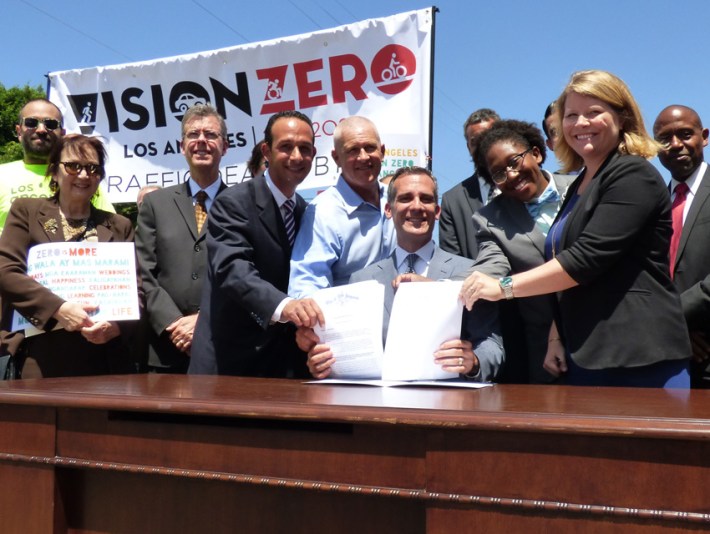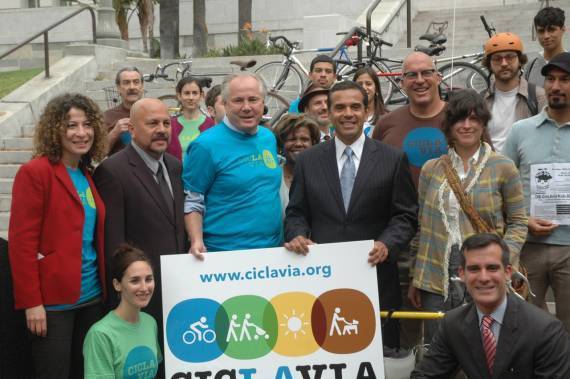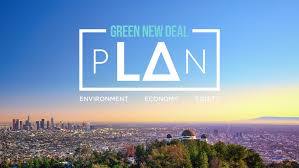Yesterday, Los Angeles Mayor Eric Garcetti signed an Executive Directive to "kick off a Decade of Action to confront and combat the climate crisis." The order, summarized and supported by Carter Rubin at the NRDC Expert Blog, promises to improve bus service by creating bus corridors, improve rail service by giving trains signal priority, create a network of protected bike lanes and trails, make CicLAvia weekly by 2022, reduce vehicle miles traveled, and complete many other initiatives to reduce L.A.'s climate footprint.
“The science could not be clearer and the stakes could not be higher. We must act this decade to save the planet and create a more equitable, prosperous, and healthy future for our children and grandchildren,” said Garcetti in a statement.
“There is literally no time to waste — because what we do in the next ten years will determine the health of our planet and whether there’s a job, a paycheck, and a place for everyone in our economy.”
But for many critics of Garcetti, there's already been a lot of wasted time in his administration. Nearly seven years in, and with just two years left until he terms out, advocates worry that this executive directive will be another disappointment from a city that has not exactly moved quickly on implementing its 2012 bicycle plan, 2010 mobility plan, Vision Zero Initiative, etc...

As a Westsider, my memory of Garcetti's vanishing act--when pressure was put on Councilmember Mike Bonin to reverse a road diet on one mile of Venice Boulevard and another diet in Playa del Rey-- remains fresh.
The Mayor's reputation for not following through on his bolder transportation projects is not confined to my neighborhood. In July of last year, Joe Linton wrote at Streetsblog that the city's pace of constructing new bike lanes is "dismal." Just yesterday, Ted Rogers wrote at Biking in L.A., "And any real progress on the mayor’s own Vision Zero plan came to a halt the first time drivers complained about a road diet."
But while skepticism is certainly warranted, history tells us a lot can happen in a short period of time if a mayor is motivated. Antonio Villaraigosa was considered a villain by advocates for safe streets (despite a mixed but mostly positive record on improving transit at Metro and LADOT) because during most of his administration there was little effort in making streets safe for bicyclists and pedestrians.

However, after a quick spin on a bicycle at a community event, Villaraigosa decided to start riding and immediately got into a crash. Overnight, he became one of the most bike-friendly mayors in the country. A bike plan that I joked at Streetsblog was "surprisingly progressive" for the city was approved, bike lanes were painted at a record-breaking pace, and the city moved forward with CicLAvia.
And while the momentum of the last half of Villaraigosa's term was squandered by Garcetti, there is no time like the present for Garcetti to be the leader we all wanted him to be from day one. The precedent is there. He can be the mayor that knows how to generate media buzz but falls short of his promise, or he can be remembered as the mayor who began the drive to make Los Angeles a climate neutral city.
As advocates, we can and should give the mayor the room to change, but in the end it will be his work and the city's progress that determines his legacy. Mr. Mayor, it's not too late to get to work.







